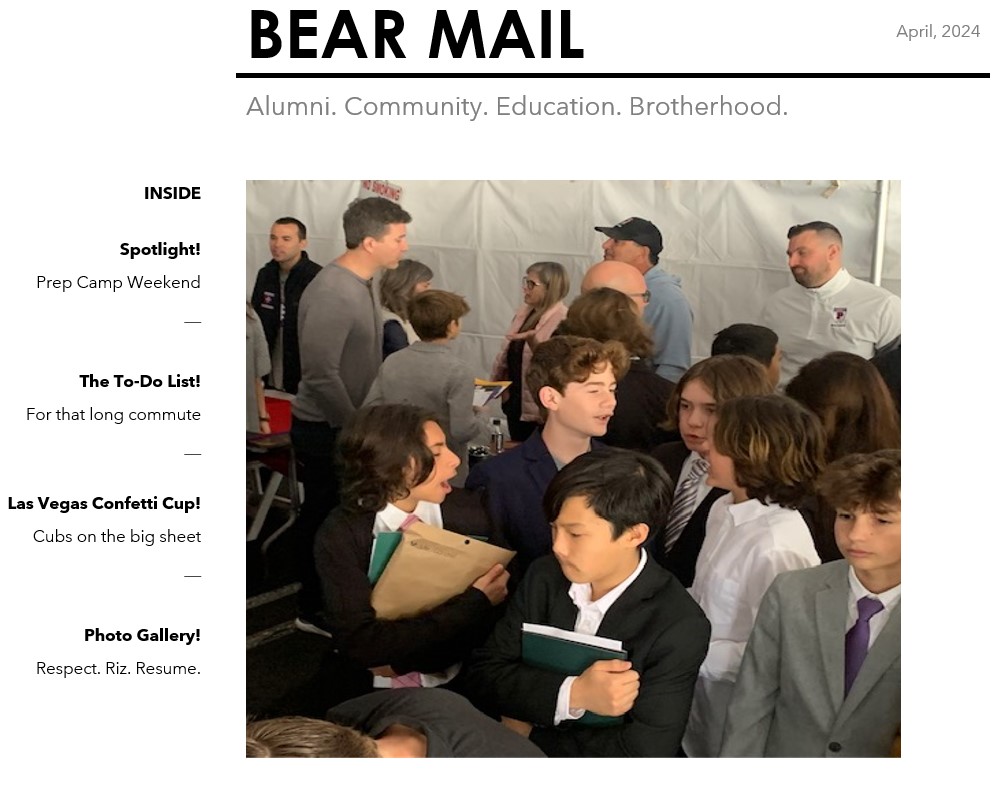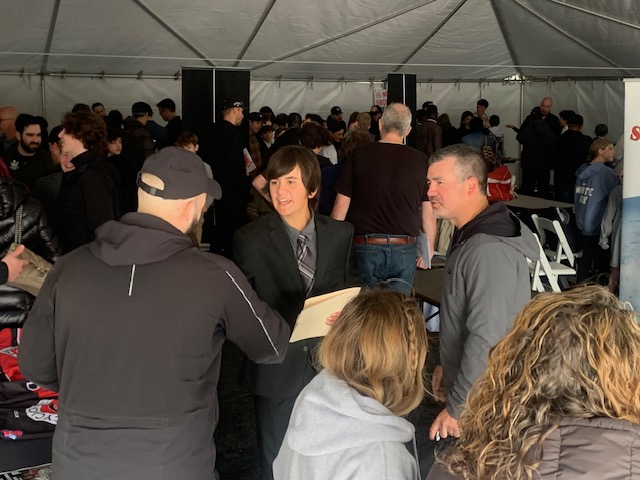An Amazing Commitment…
- By John Harrington
For the last six months Bear Mail has centered on the journey of our local young players as they make their way into the world. Most of them made the transition from travel hockey to either prep school or academy (with a few exceptions). And all of them were playing at the AA level at the time of their move. What is glaring is that none of these players had the AAA stamp on their resume when they left California. Not because they couldn’t make AAA, but simply because there wasn’t a viable AAA program available that made educational, financial, or logistical sense. Yet they still landed at a great prep school or academy and continued to play at an elevated level. A few made it to the BCHL, NAHL and NCAA respectfully (among other leagues). So just how important is AAA? Sure, there is tons of exposure with AAA as the teams travel to many tournaments, outside of state and country, swarming with scouts. We saw it with our own Bears AAA teams. The right scout. At the right tournament. Finds the right player. For the right position. On the right team. It happens. But what if you cannot land the right position at any of (the soon to be) three AAA clubs in California? Less AAA teams is tantamount to less job openings. Simple. Dominate AA. And the prep schools and academies will take notice.
I heard about the annual Prep Camp for the last few years since we made our move to the Bears, but never really had a reason to go until now. I thought it would be a valuable experience for my son to create a resume and go through the process of what it is like to market oneself to potential coaches (AKA employers). Just like in the real world. Face to face interviews. To watch the day unfold was amazing. The preparation alone of preparing a bio and summary of who you are as a person, teammate, and player. The planning of great questions. The leveling up as a professional with a responsible wardrobe that indicates you mean business. Some of the players I didn’t even recognize. Some serious style. You know who you are! And there were a lot of them. I watched many players, nervous at first, eventually break free from their parents, and introduce themselves to the coaches. With each interview, they gained confidence, making great eye contact, listening with purpose, and even taking notes. I was with the Middle School Group (primarily 2009, 2010, 2011) and to see these young players so engaged, not an iPhone in sight (ok, maybe a few), lining up for an interview, rehearsing questions in their head, was simply fantastic. The cliché statement that "hockey prepares you for life" was happening right before our eyes. I saw a few players, normally shy and restrained, come out of their shell, mature and composed. What a metamorphosis! Who are these guys?
A few days later, I had the pleasure of interviewing Coach James Gaertner from Shawnigan Lake School, British Columbia to get his perspective of his trip to Pickwick. He was impressed with the level of talent at the camp and recognized potential targets that could make an impact on his team. Knowing that many of his U18 AAAs are leaving to college or juniors, and many of his U15s are moving up to fill gaps, he is constantly recruiting through a network of coaches, friends, and showcases across Canada and the USA. At Pickwick, sitting in the bleachers, pen ready, Coach Gaertner takes note of the prospect's skating skills, and then hockey IQ. He studies the player. Can he see the game? Can he move the puck? Does he compete defensively? Does he have a willingness to defend, play the game the right way, and get above the puck? Does he play a 200ft game? We talked about players with an individual mindset, “If you are hotdogging it, you might not fit the mold of what we are looking for on our team.” This is a tough concept for players to absorb as many insist on trying to become a highlight reel on the ice, which only draws attention to their lack of team play. With many gaps to fill, Coach Gaertner looks for players with a “constellation of skills” that will eventually compliment his U18 team. He has picked up quite a few kids over the years who were just “ok” and some physically smaller. But these players had big mindsets, did the right things on the ice at the right time, and really developed between 16-20 years old. These "ok" players are now captaining Junior A teams and playing high level college hockey. Coach Gaertner made it clear, he seeks players to be the right “quality human,” who not only contribute on the ice, but as positive members of the Shawnigan Lake student body.
For Coach Gaertner, it all started at the table at Prep Camp, as players lined up to talk to him. He looks first to see if they are assertive while studying their body language. Eye contact and the questions asked reveal so much. Within seconds, he can tell whether this was the player’s idea and goal, or if this was driven by the parent. In the end, this next level of hockey will thrust the player into an environment of like-minded athletes, who take their school, training, nutrition, and sleep seriously. It is positive peer pressure which pushes them daily to become the best that they can be. We all know, there are not a lot of players that can make a living in hockey, but next level environments can create great habits that transfer into careers and relationships off the ice.
Many people ask me my thoughts about if I would send my son far away from home, and if my wife and I would be ok with that. When they say “send” it comes across negative. The players I’ve interviewed never said that their parents “sent” them to prep school. For them, it was a goal driven by their actions and dreams. They prompted their parents. They lead the decision. Timing is key. There are a lot of things that need to click for that decision to make sense. Undeniably, the young athlete must want to go. They have to be all in. They must inherently want, and ardently desire this mission. Many of the players I spoke to really wanted this and visualized the next few years ahead of them. They also revealed uncanny responsibility, maturity, focus, desire, and discipline. It is a big step, and it can be an extremely rewarding step. Parents can certainly nudge and create environments which spark those goals and dreams. And that’s what I saw at the Prep Camp. Light bulbs going off everywhere. That there is a path. Parents can certainly use that day to see how their players would manage themselves. How they prepared for the day. How they prepared their resume. How serious they take the meetings. What are the questions that they have? Not just the questions that the parent has. But really deep-down what question does the athlete have? Are they visualizing that future?
When I first started getting into travel hockey, a roller hockey mom shuddered, and could not believe that I would drive from Agoura Hills to Simi Valley to practice. “That's literally a 20-minute drive one way,” she gasped, “Travel hockey is such a commitment.” She implored that they wouldn’t do it. She says the driving is awful. And some people just do not get it. Some parents think of “commitment” as a negative term. I look at those drives as a great place to check in with the athlete. You spend enough hours in the car with your child that you will know if this is a vocation for them. Are they excited, after an hour drive, to jump out of the car when they see their teammates in the parking lot messing around, and getting ready for dryland? That’s a good starting point. That’s one of dozens of amazing commitments that will tell you if this is something they really want. We can only “drive” them for so long. And then that day will come when it’s really up to them. And if it is what they really want, they will find a way to get there. |











